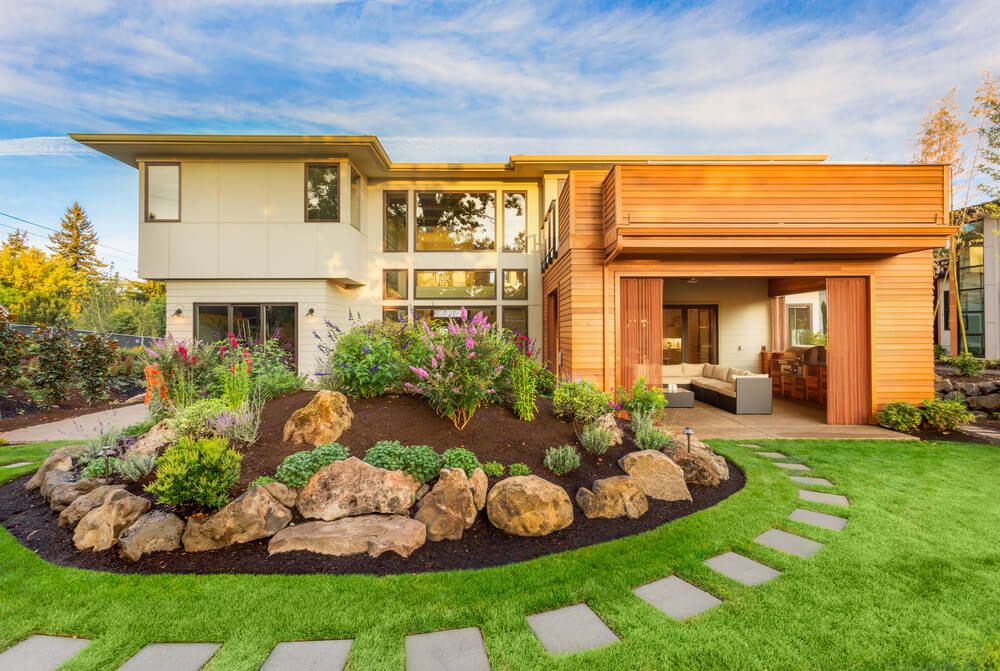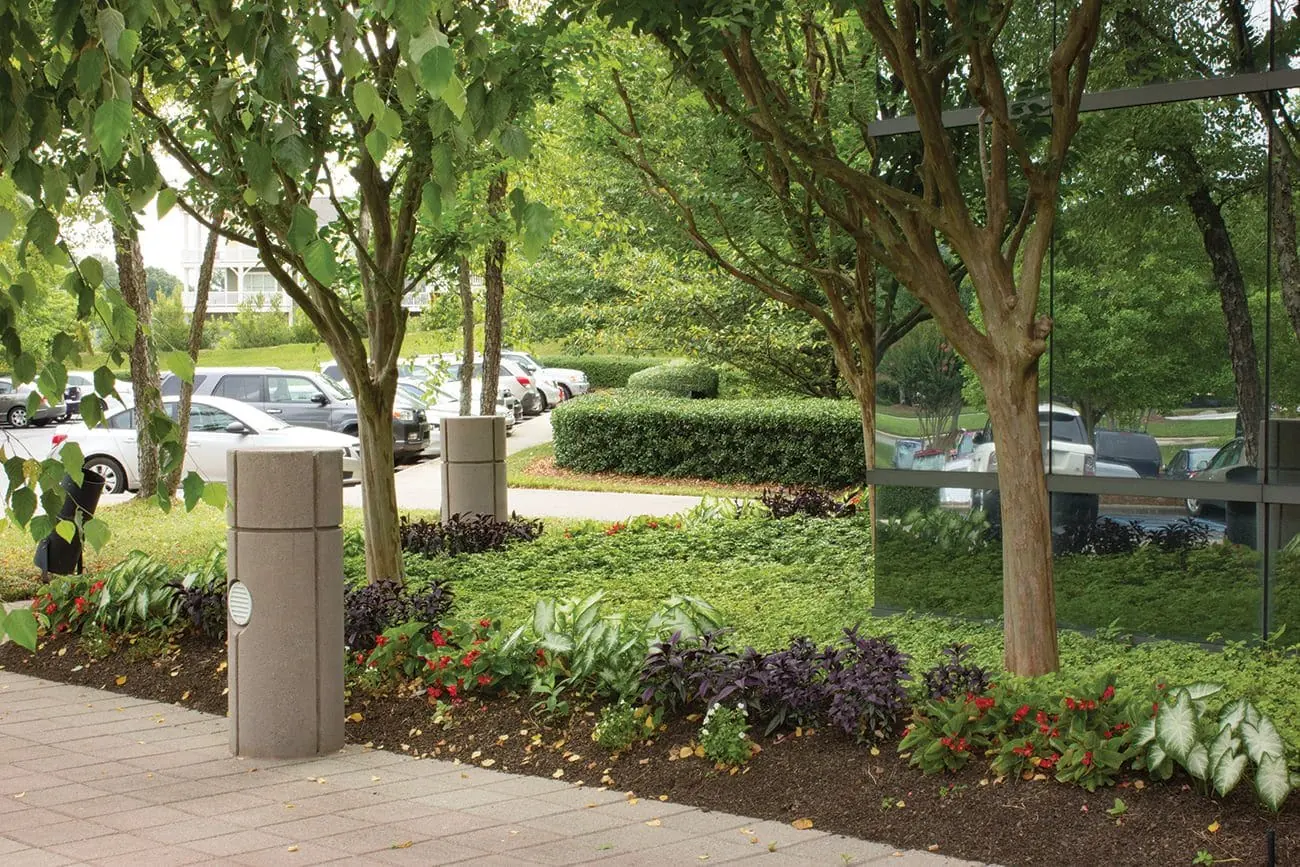Lawn Cleanup Jacksonville: Keep Your Backyard Immaculate with Professional Lawn Care
Lawn Cleanup Jacksonville: Keep Your Backyard Immaculate with Professional Lawn Care
Blog Article
Elevate Your Residential or commercial property's Aesthetic With Sustainable Landscaping Layouts and Eco-Friendly Practices

Benefits of Sustainable Landscape Design
Applying sustainable landscape design methods not just preserves natural deposits yet likewise promotes biodiversity and improves overall environmental wellness. By picking eco-friendly landscape design methods, home proprietors can gain a wide variety of advantages that extend beyond simply visual appeal. One substantial benefit is the decrease of water usage via using drought-resistant plants, rain yards, and effective watering systems. This not only lowers energy expenses but likewise contributes to water preservation efforts in the neighborhood.
In addition, lasting landscaping can improve dirt health and wellness by minimizing making use of chemical plant foods and pesticides, therefore producing a much healthier environment for plant growth and advantageous dirt microorganisms. This, subsequently, improves the general durability of the landscape to withstand ecological stress factors and environment adjustment effects - bush removal Jacksonville. Additionally, sustainable landscaping techniques can draw in diverse wild animals, including pollinators like and butterflies, fostering an extra lively and balanced community within the building
Incorporating Indigenous Plants
To build on the advantages of sustainable landscape design, a calculated concentrate on including native plants can further enhance ecological strength and promote biodiversity within the landscape. Indigenous plants are species that naturally take place in a specific area and have actually progressed to flourish in the neighborhood climate, dirt problems, and ecosystem. By including indigenous plants in landscape design styles, property proprietors can decrease water use, lessen the demand for chemical pesticides and fertilizers, and sustain the regional wild animals populace.
Including native plants additionally assists in preserving the unique personality and identification of an area's vegetation. These plants usually need less upkeep once established, making them a sustainable and cost-effective landscaping service over time. In addition, indigenous plants can bring in indigenous pollinators like butterflies and , contributing to the total health and wellness of the ecosystem.
When selecting native plants for landscape design tasks, it is necessary to pick varieties that are well-suited to the details ecological problems of the website. Consulting with botanical yards or regional nurseries can give useful assistance on picking the right indigenous plants for a certain location. By incorporating indigenous plants right into landscaping layouts, homeowner can develop attractive, sustainable outside areas that benefit both the environment and the neighborhood.
:strip_icc()/tan-house-landscaping-plants-733878e9-d20456ef84b14460ab7b78f46a7d694b.jpg)
Water Preservation Techniques
Effective watering approaches play an essential function in sustainable landscaping practices, ensuring optimum water conservation initiatives in outdoor areas. Implementing strategies such as drip watering, rain harvesting, and smart watering systems can dramatically decrease water waste while keeping a healthy landscape. Drip irrigation delivers water directly to the origins of Website plants, decreasing dissipation and overflow. Rainwater collecting involves collecting rain from roof coverings and keeping it for later use in watering, reducing the dependence on community water resources. Smart irrigation systems use weather data and soil moisture levels to adjust sprinkling timetables, preventing overwatering and advertising water performance.
Along with advanced irrigation techniques, xeriscaping is another water-saving landscaping strategy that concentrates on using drought-resistant plants, mulch, and reliable irrigation to create a low-water landscape style - landscaping contractor Jacksonville. By selecting native plants that are appropriate to the neighborhood environment and soil problems, homeowner can lower the demand for excessive watering, ultimately conserving water and promoting a sustainable outside atmosphere
Eco-Friendly Hardscaping Ideas
Enhancing outdoor rooms with eco-friendly hardscaping features can contribute considerably to lasting landscape design practices. When considering hardscaping elements, go with materials like recovered timber, recycled concrete, or all-natural rock to minimize ecological impact. These materials not just include an one-of-a-kind visual attract your exterior area however also lower the demand for brand-new resources removal.
Implementing permeable leading choices such as crushed rock or absorptive concrete can aid reduce water runoff and promote groundwater recharge. These options enable rain to leak into the ground, stopping erosion and lessening the burden on stormwater systems.
Incorporating indigenous plants into hardscaping designs can better boost eco-friendliness by sustaining local wildlife and lowering the need for excessive watering or chemical therapies. By integrating eco-friendly walls or vertical gardens, you can introduce a lot more vegetation into urban setups, enhancing air top quality and biodiversity.
Including energy-efficient lights, such as solar-powered LEDs, right into hardscaping layouts can reduce electricity consumption and reduced your building's carbon footprint. Prioritizing eco-friendly hardscaping concepts not only improves the elegance of your outdoor room but also shows a commitment to environmental stewardship.
Upkeep Tips for Sustainable Landscapes

Frequently prune plants to promote healthy and balanced growth and protect against overgrowth that can lead to pest infestations or illness. Usage organic plant foods to nurture the soil and plants without hazardous chemicals that can leach right into the atmosphere.
Final Thought
To conclude, sustainable landscaping practices provide numerous advantages for homeowner, from boosting the aesthetic appeal of the environments to advertising environmental conservation. By incorporating native plants, carrying out water conservation strategies, and making use of environment-friendly hardscaping concepts, homeowner can create stunning landscapes that are additionally environmentally liable. With correct maintenance, lasting landscapes can contribute and flourish to a healthier environment for both humans and wildlife.
Furthermore, sustainable landscape design can enhance dirt health by minimizing the usage of chemical plant foods and chemicals, thereby producing a healthier atmosphere for plant growth and valuable dirt microorganisms.To develop upon the advantages of lasting landscape design, a tactical emphasis on incorporating indigenous plants can even more improve environmental resilience and advertise biodiversity within the landscape. By including native plants in landscaping styles, property owners can lower water use, decrease the demand for chemical pesticides and plant foods, and sustain the regional wildlife population.
These plants usually require browse around this site much less upkeep when developed, making them a economical and lasting landscaping solution in the lengthy run. By incorporating native plants into landscaping styles, property owners can create attractive, lasting exterior rooms that benefit both the neighborhood and the setting.
Report this page